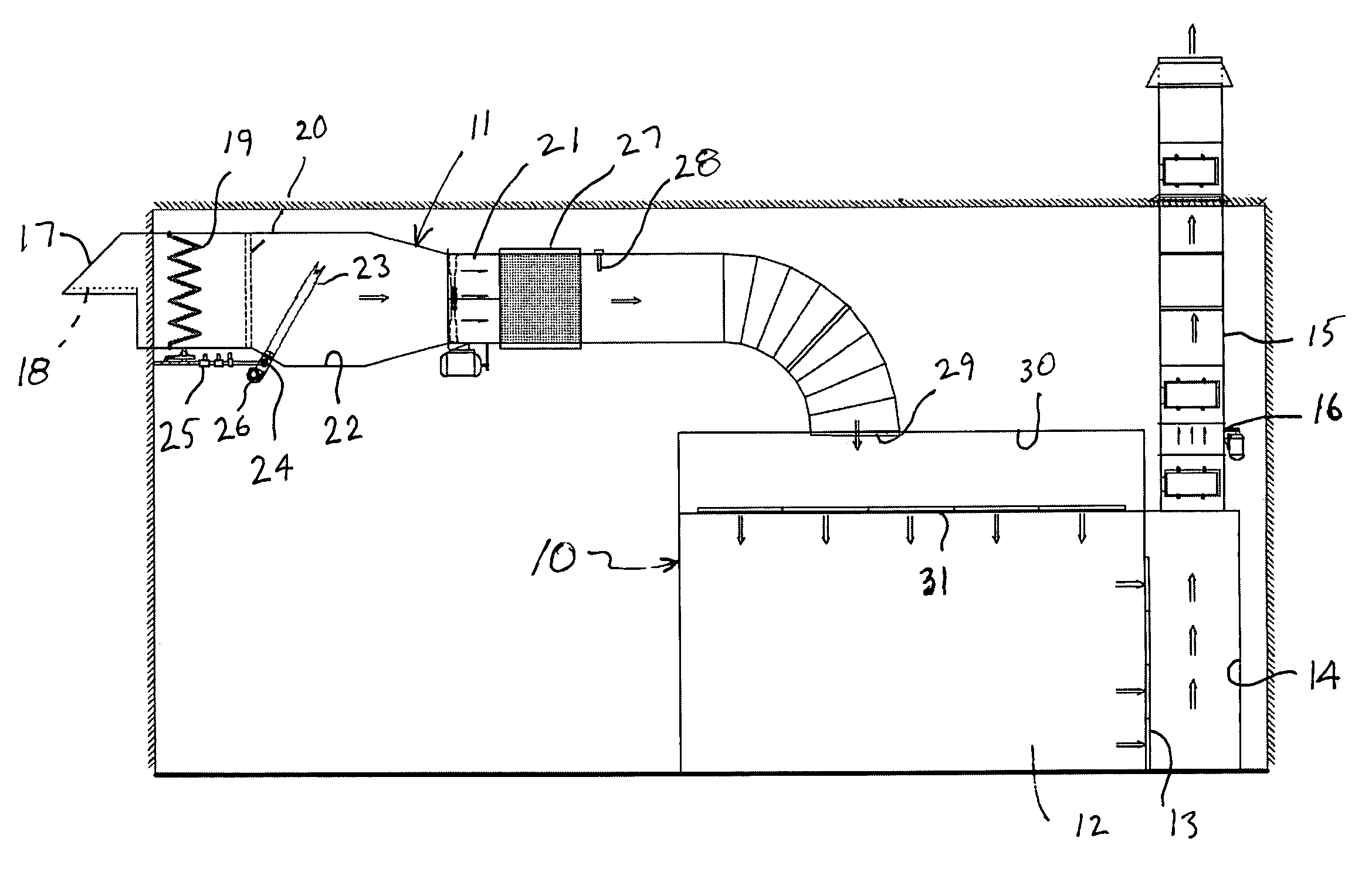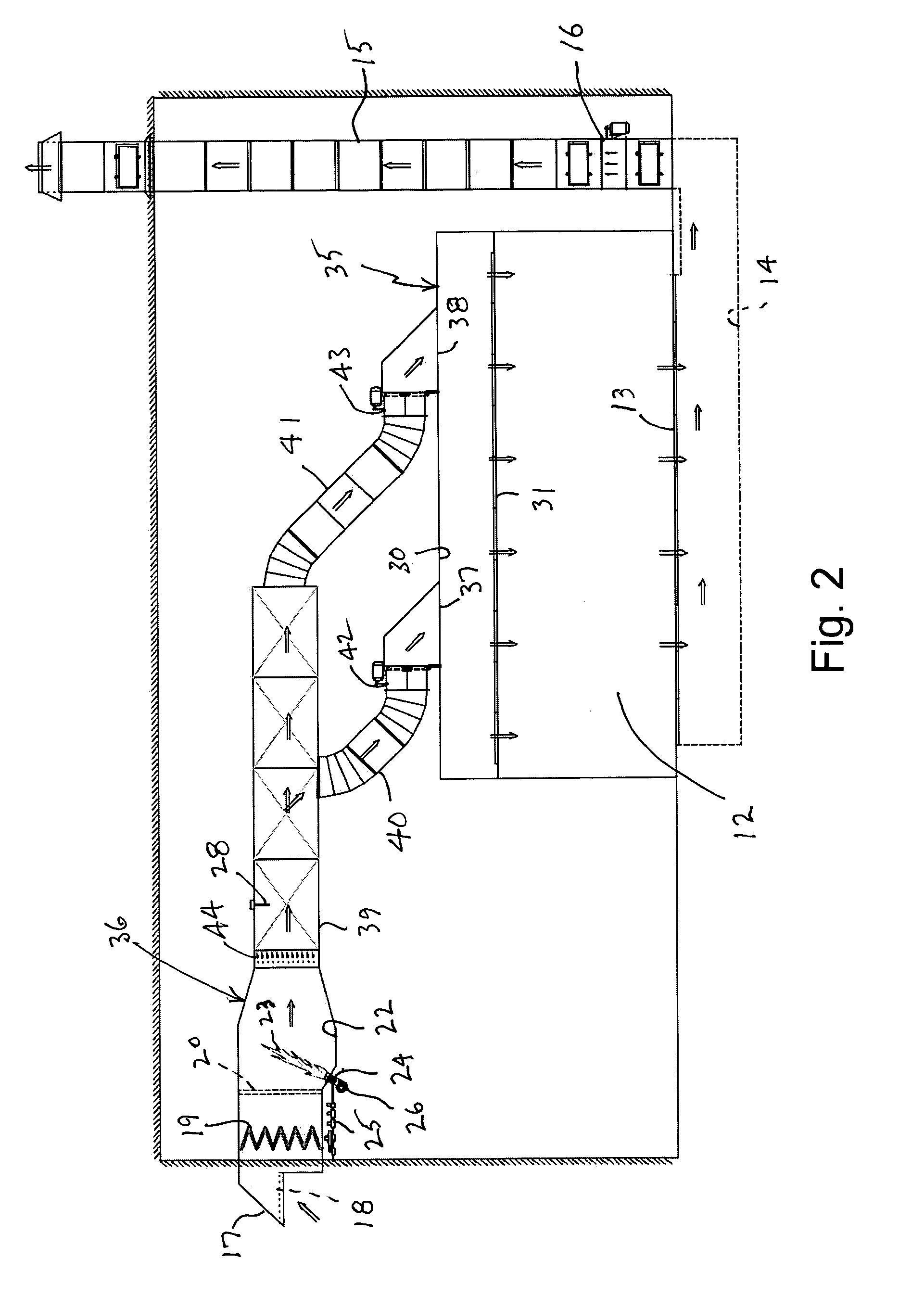Heated replacement air system for commercial applications
a technology of air system and air system, which is applied in the field of heat exchange air system for commercial applications, can solve the problems of short-lived attempts to place premix burners in the air stream in the early days of air replacement technology, potentially dangerous process of applying atomized liquid coatings and adhesives, and reduce the emission of volatile organic compounds (voc's) and particulates, and increase the transfer efficiency of process coating application. , the effect of increasing the quality of the applied finish
- Summary
- Abstract
- Description
- Claims
- Application Information
AI Technical Summary
Benefits of technology
Problems solved by technology
Method used
Image
Examples
Embodiment Construction
[0025]The invention is directed to a heated replacement air system for an industrial or commercial process, and to apparatus which allows for the independent adjustability of the replacement air volume flow and the BTU energy applied to that air volume flow. The system is described herein specifically for use with industrial and commercial spray paint booths. However, the system also can be used with similar processes where varying the air volume being moved through the system and the temperature of the air during some periods of the process might allow the process to still function well within all process and safety requirements.
[0026]Turning to FIG. 1 of the drawings, an industrial paint spray booth 10 is shown incorporating a heated replacement air system 11 according to one embodiment of the invention. The spray booth 10 includes a work chamber 12 where objects are painted. The size of the chamber 12 will depend on the size of the objects which are painted. During painting, air ...
PUM
 Login to View More
Login to View More Abstract
Description
Claims
Application Information
 Login to View More
Login to View More - R&D
- Intellectual Property
- Life Sciences
- Materials
- Tech Scout
- Unparalleled Data Quality
- Higher Quality Content
- 60% Fewer Hallucinations
Browse by: Latest US Patents, China's latest patents, Technical Efficacy Thesaurus, Application Domain, Technology Topic, Popular Technical Reports.
© 2025 PatSnap. All rights reserved.Legal|Privacy policy|Modern Slavery Act Transparency Statement|Sitemap|About US| Contact US: help@patsnap.com



